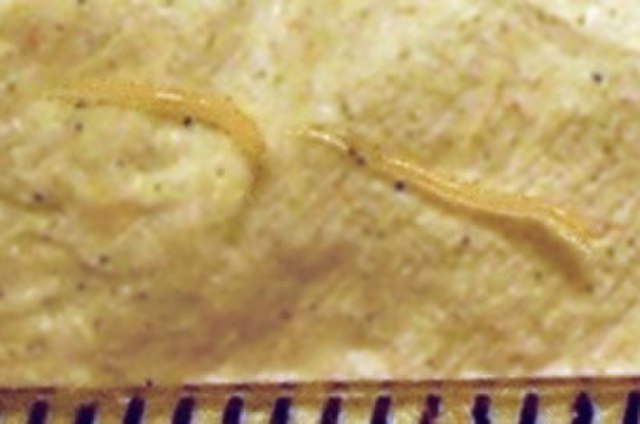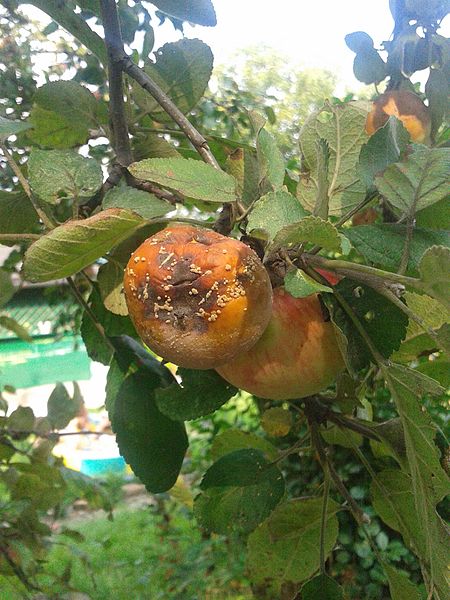In biology, a pathogen, in the oldest and broadest sense, is any organism or agent that can produce disease. A pathogen may also be referred to as an infectious agent, or simply a germ.
A photomicrograph of a stool that has shigella dysentery. These bacteria typically cause foodborne illness.
Magnified 100× and stained. This photomicrograph of the brain tissue shows the presence of the prominent spongiotic changes in the cortex, with the loss of neurons in a case of a variant of Creutzfeldt-Jakob disease (vCJD)
Two pinworms next to a ruler, measuring 6 millimeters in length
Brown rot fungal disease on an apple. Brown rot typically target a variety of top-fruits.
The germ theory of disease is the currently accepted scientific theory for many diseases. It states that microorganisms known as pathogens or "germs" can cause disease. These small organisms, too small to be seen without magnification, invade humans, other animals, and other living hosts. Their growth and reproduction within their hosts can cause disease. "Germ" refers to not just a bacterium but to any type of microorganism, such as protists or fungi, or other pathogens that can cause disease, such as viruses, prions, or viroids. Diseases caused by pathogens are called infectious diseases. Even when a pathogen is the principal cause of a disease, environmental and hereditary factors often influence the severity of the disease, and whether a potential host individual becomes infected when exposed to the pathogen.
Pathogens are disease-carrying agents that can pass from one individual to another, both in humans and animals. Infectious diseases are caused by biological agents such as pathogenic microorganisms as well as parasites.

Scanning electron microscope image of Vibrio cholerae. The bacterium that causes cholera.
A representation by Robert Seymour of the cholera epidemic depicts the spread of the disease in the form of poisonous air.
Louis Pasteur's spontaneous generation experiment illustrates that liquid nutrients are spoiled by particles in the air rather than the air itself. These results of these experiments supported the germ theory of disease.







